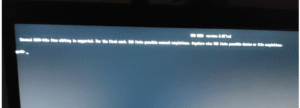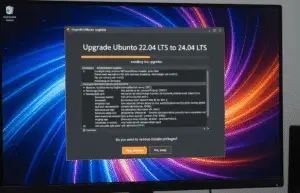
Must Know Network Commands for Every Engineer
If you’re working as a System Administrator, Network Engineer, or even aiming to become one, understanding and mastering key network commands is a must. These commands help in real-time troubleshooting, diagnosing issues, and ensuring smooth communication between devices across networks.
🧠 Whether you’re handling enterprise routers or fixing Wi-Fi at home, these commands will become your go-to tools.
What Are Network Commands?
Network commands are built-in tools you can run in the terminal (Command Prompt, PowerShell, or Linux shell) to view, manage, and troubleshoot network configurations and connectivity. These are extremely helpful for tasks like:
Finding your IP address
Checking if a website is reachable
Tracing connection paths
Identifying open ports
Scanning the network for connected devices
Top Network Commands You Must Know
1. ping
Used to test connectivity between your machine and another (website or device).
ping google.com
✅ Use Case: Check if your system is connected to the internet.
📌 Tip: If ping fails, it may be a DNS issue or a network outage.

2. ipconfig (Windows) / ifconfig (Linux/Mac)
Displays your device’s IP address, subnet mask, and default gateway.
ipconfig
✅ Use Case: Quickly find your IP or see if your PC has received one from DHCP.
📌 Tip: Use ipconfig /all to get more detailed network adapter info.
3. tracert (Windows) / traceroute (Linux/Mac)
Shows the path your data takes to reach a remote host.
tracert facebook.com
✅ Use Case: Find where your connection is slowing or failing.
📌 Tip: Helpful for diagnosing routing issues between networks.
4. netstat
Displays all current network connections and listening ports.
netstat -an
✅ Use Case: See active connections and detect suspicious traffic.
📌 Tip: Combine with -b on Windows to see which applications are using each port.
5. nslookup / dig
Queries DNS servers to get IP addresses of domain names.
nslookup openai.com
✅ Use Case: Diagnose DNS issues, like when a site won’t load but you have internet.
📌 Tip: dig gives more detailed output and is preferred on Linux.
6. arp -a
Displays the ARP (Address Resolution Protocol) cache.
✅ Use Case: Shows the IP to MAC address mapping in your local network.
📌 Tip: Useful to check if a device is on your LAN or to detect ARP spoofing.
7. telnet/ssh
Used to test open ports or access remote systems securely.
ssh user@192.168.1.10
✅ Use Case: Administer remote servers or check if a port is open.
📌 Tip: SSH is secure; telnet is outdated and insecure.
8. pathping (Windows only)
Combines ping and tracert, showing both latency and packet loss.
pathping google.com
✅ Use Case: Advanced diagnosis of where packets are being lost.
9. netsh (Windows only)
Powerful command to manage Wi-Fi, network adapters, and firewall settings.
netsh wlan show profile
✅ Use Case: View and export saved Wi-Fi passwords and profiles.
10. nmap
A powerful network scanner (needs to be installed).
nmap -sP 192.168.1.0/24
✅ Use Case: Scan your local network for all connected devices.
📌 Tip: Widely used in cybersecurity and ethical hacking.
Essential Skills Every Network Engineer Must Learn
If you’re working as a network engineer (or planning to become one), knowing a few commands isn’t enough. You need to develop a deeper understanding of how networks work, how to troubleshoot them, and how to manage them effectively.
Below are must-know areas and related tools or topics that you should focus on:
1. Practice Networking Daily (Using Simulators)
Regular practice builds confidence and real-world problem-solving skills. Use simulation tools like:
🔧 Cisco Packet Tracer – Great for learning Cisco devices and CLI
🖥️ GNS3 – Simulates complex networks with virtual routers and firewalls
🧪 EVE-NG – Enterprise-grade lab tool for practicing multi-vendor environments
💡 Related Topic to Cover:
➡️ Best Network Simulation Tools for Beginners
2. Build Your Own Home Lab
Hands-on labs help reinforce what you learn. Start with:
A basic router (or use a virtual one)
A switch (physical or virtual)
A PC or Raspberry Pi
Free virtualization tools like VirtualBox or VMware Workstation Player
💡 Related Topic to Cover:
➡️ How to Build a Budget-Friendly Home Lab for Networking Practice
3. Earn Industry-Recognized Certifications
Certifications validate your skills and open doors to job opportunities. Begin with:
🎓 CompTIA Network+ – Foundation-level, vendor-neutral
📡 Cisco CCNA – Globally recognized for routing/switching basics
🌐 Juniper JNCIA – Good for data center and service provider networking
💡 Related Topic to Cover:
➡️ Top Networking Certifications for 2025 – Which One Should You Choose?
4. Master Network Troubleshooting (Layer by Layer)
Every successful engineer should follow the OSI model approach when fixing issues. Start from:
🧩 Layer 1 – Physical: Check cables, ports, signal lights
🌐 Layer 2 – Data Link: MAC address, switch port status
🌍 Layer 3 – Network: IP addressing, routing problems
🌐 Layer 4 – Transport: Port blocking, TCP/UDP issues
🧠 Layer 7 – Application: DNS, HTTP, SMTP, etc.
💡 Related Topic to Cover:
➡️ Understanding the OSI Model – The 7 Layers of Networking Explained
5. Get Familiar with Network Security Basics
Knowing basic commands is great, but securing your network is critical. Learn about:
🔒 Firewalls & ACLs
🛡️ VPNs and Secure Tunnels
🚫 ARP Spoofing and MAC Flooding
🕵️♂️ Common Attacks & How to Detect Them Using Commands
💡 Related Topic to Cover:
➡️ Top Network Security Tips for System and Network Admins
6. Understand Real-World Networking Use Cases
It’s not just about labs. Learn how networks support real businesses. Study:
📶 Enterprise Wi-Fi setup
📁 File sharing via SMB/NFS
🏢 Connecting remote offices with VPNs
💡 Related Topic to Cover:
➡️ How Networks Work in Real IT Environments – A Beginner’s Guide
📌 Final Thoughts
Mastering these network commands is the first big step toward becoming a confident and capable Network Engineer. These tools help you troubleshoot faster, detect problems early, and keep your network running smoothly.
Whether you’re managing a corporate LAN or your home Wi-Fi — these commands are your power tools.




